
Fitness tips for men in their 40s

To maintain general health and well-being in your 40s, you must maintain a healthy level of fitness. It's critical to modify our workout regimen in accordance with the physical changes that aging brings about in our body.
Listed below are some fitness advice for men in their 40s:
Consult a healthcare practitioner, It's important to speak with your doctor or another healthcare professional before beginning any new fitness regimen. They are able to evaluate your present state of health and offer tailored guidance depending on any existing medical conditions or possible dangers.
Workouts that include cardiovascular and strength training should be incorporated into your program. Examples of such workouts are brisk walking, jogging, swimming, cycling, and weightlifting. Strength training protects muscle mass and boosts metabolism, while cardio aids to improve heart health and burn calories.
Prioritize flexibility and mobility
As we age, our flexibility and mobility may decline. As a result, including stretches and yoga in your routine can help you stay injury-free and maintain good joint health.
Be mindful of your joints, As you age, your joints may be more prone to damage. If you have any joint-related difficulties, choose low-impact exercises like swimming or cycling to lessen the strain on your joints.
Observe your body: During your workouts, pay close attention for any indications of pain or discomfort. Injury might result from overtraining or pushing yourself too hard. Between workouts, take the necessary time to relax and recover.
Be practical while setting your exercise objectives, and aim for attainable milestones. Although progress may be slower than when you were younger, constancy is essential.
Include functional exercises
By simulating motions you make every day, functional exercises can help you become more functionally fit overall. Squats, lunges, and core exercises are a few examples.
Keep yourself properly hydrated for the best performance and recuperation. Throughout the day, especially while working out, drink lots of water.
Watch what you eat
Keep a healthy, balanced diet with an emphasis on nutrient-rich foods. To support your exercise objectives, eat a variety of fruits, vegetables, lean meats, complete grains, and healthy fats.
Alcohol intake should be kept to a minimum, and smoking should be avoided altogether, as both can harm your overall health and fitness. Reduce or get rid of these behaviors to enhance your wellbeing.
Sleep well, Recovery and rest are essential for both physical and mental health. To enhance your fitness and general well-being, aim for 7-9 hours of quality sleep each night.
Manage your stress, Prolonged stress can impede your fitness improvement and result in a number of health problems. Find stress-reduction methods that are effective for you, such as deep breathing, meditation, or hobbies.
Maintain consistency
Maintaining and improving fitness in your 40s requires consistency. Make a schedule for your workouts that works with your routine and follow it.
A unique fitness journey awaits. One person's solution might not be suitable for another. It's crucial to choose hobbies you can stick with over the long term and like. Always put safety first and pay attention to your body as you strive to achieve your fitness objectives. Consider working with a competent fitness trainer or coach if you're unclear of where to begin or which workouts are appropriate for you.
Keep an eye on your heart rate while exercising, particularly if you have any heart-related issues. To make sure you are exercising at the right intensity, use a heart rate monitor or learn to evaluate your level of effort.
Keep socially active, Attending group exercise classes or other social events can help you keep inspired and in touch with people who have similar health aspirations.
Warm-up and cool-down, Always hydrate before and after exercise. This aids in preventing injuries by getting your muscles and joints ready for the workout.
Maintain interest in your fitness program by mixing up your workouts with different exercises and activities. By changing things up, you can avoid boredom and exercise different muscle regions.
Track your development
Use apps or a fitness notebook to record your exercises, measurements, and advancement. Observing progress over time can inspire you and point out places where you can make changes.
Do not compare, Instead of comparing yourself to others, concentrate on your own development. Everybody has a different fitness journey, therefore the most important thing is to focus on yourself and make changes.
Take high-intensity interval training (HIIT) as an example
Short bursts of intensive exercise are interspersed with fast rest intervals during HIIT workouts. They may save time and be good for improving metabolism and cardiovascular health.
Reconsider your diet: As you become older and your body changes, you could need a different diet. To make sure your diet supports your physical fitness objectives and general health, think about speaking with a trained nutritionist.
Pay attention to your body's recovery signals if you experience soreness or weariness following a strenuous workout. Include relaxation days, or spend those days doing lighter activities.
Stay hydrated when exercising
To avoid dehydration and support performance, drink water prior to, during, and after your activities.
Pay attention to your posture, It might cause pain and injury. Throughout the day, pay attention to your posture, especially if you spend a lot of time sitting at a desk. Support bone health, To support bone health as you age, including foods high in vitamin D and calcium in your diet.
Celebrate achievements other than weight loss, Instead of concentrating just on the number on the scale, highlight other successes like improved stamina, flexibility, or sleep.
Being fit may take time, and setbacks can occur, so have patience and kindness toward yourself. Be kind to yourself and refrain from being too harsh. Keep your attention on the progress you are making.
Preventive health screenings should be taken into consideration.
Regular checkups and screenings can help identify potential problems early, enabling prompt intervention and better overall health management.
Making long-lasting lifestyle adjustments is the key to maintaining fitness in your 40s. Long-term habits that support your health and wellbeing are equally as important as short-term ones in this regard. Keep a positive attitude, stay motivated, and continue to modify your workout regimen to meet your evolving requirements and objectives. If you work hard and consistently maintain a healthy lifestyle, you can live well into your forties and beyond.
Find ways to be active throughout the day in addition to the workouts you have planned. Use the stairs instead of the elevator, go for brief walks during breaks, and partake in sports or other physical activities.
Include stability and balance exercises
As we age, our stability and balance may deteriorate, increasing the chance of falling. Include balance-testing exercises, such as stability ball exercises, yoga positions, and single-leg exercises.
A fun approach to stay active and socialize is to join a sports league or club. Look for neighborhood sports leagues or organizations that suit your preferences and level of expertise.
Keep an eye out for any pain, discomfort, or exhaustion in your body both before and after activity. Take any unsettling feelings as a cue to rest or change your schedule.
Maintain a flexible schedule
Since life can be unpredictable, it's acceptable to change your training plan as necessary. Adjust your workouts to match your shifting obligations and duties.
Use proper lifting techniques, To lower the chance of injury when weightlifting or doing resistance training, make sure you use the right form and lifting techniques.
Engage in routine cardiovascular testing, If you have a family history of heart-related problems, you may want to think about getting a routine cardiovascular checkup to monitor your heart health.
Exercise with a friend or family member to maintain motivation
Exercise with a friend or family member to maintain motivation and accountability. Exercise becomes more fun as a result.
Be mindful of your testosterone levels as they may naturally decrease with aging. If you suffer symptoms like poor energy, diminished muscle mass, or decreased libido, you might want to talk to a doctor about your hormone levels.
Drink plenty of water before and after drinking to lessen the drying effects of alcohol. If you decide to consume alcohol, be sure to do so before and after.
Stretching that is dynamic entails moving the joints through their full range of motion before an exercise to warm up the muscles and improve blood flow. Both performance and injury risk can be improved by it.
Set attainable sleep objectives
Make getting enough restful sleep each night a top priority in order to promote recovery and general wellbeing.
Celebrate your successes and accomplishments, As you continue on your fitness journey, acknowledge your accomplishments and milestones. Give yourself little incentives for maintaining your commitment and attaining your objectives.
Get Outdoors, Do your workouts outside as much as you can. A change of scenery in nature can be rejuvenating and have additional advantages for your mental health.
Be a role model
If you have kids or younger family members, being physically active can inspire them to develop healthy habits of their own and set a good example for them.
In your 40s, staying fit is about more than just looking good; it's also about encouraging a healthy lifestyle, enhancing general wellbeing, and lengthening your life. Be flexible, pay attention to your body, and adopt a good and long-lasting attitude when it comes to fitness. You may flourish in your 40s and beyond with a balanced approach to fitness, nutrition, and self-care.
Use foam rolling, Include foam rolling in your routine to promote flexibility and muscle rehabilitation. By releasing muscle tension and tightness, foam rolling can lower the risk of injuries and improve performance.
Pay attention to your core
Building up the muscles in your abdomen, back, and hips will help you be more stable, have better posture, and be more functionally fit overall. Include exercises like Russian twists, bridges, and planks.
Maintain consistency in your warm-up routine. Before every workout, conduct a dynamic warm-up to enhance joint mobility, boost blood flow to your muscles, and get your body and mind ready for the activity.
Avoid spending too much time sitting down because it might cause weak glutes, tight hips, and bad posture. Regularly take breaks to stand and stretch, and if it's an option, think about using a standing desk.
Limit processed foods and added sugars
Opt for whole, unprocessed foods rather than processed ones, and watch your intake of added sugars. Your general health and efforts to stay healthy are supported by a balanced diet.
Mind-body exercises, Take into account including mind-body exercises like qigong, tai chi, or meditation into your daily routine. These techniques can aid in stress reduction, attention improvement, and general wellbeing.
Exercise challenges can help you stay motivated. Take part in them or establish your own goals to keep yourself interested in and committed to your fitness journey.
Use wearable technologies or fitness applications to measure your exercises, heart rate, steps, and other relevant data to track your progress. If necessary, you can modify your training with the aid of this information.
Choose low-impact exercises that are soft on your joints, such as swimming or elliptical workouts, if you have joint problems or are recovering from an accident.
Keep hydrated while it's hot outside
In hotter temperatures or during strenuous exercise, pay close attention to staying hydrated to prevent dehydration and heat-related problems.
Training your flexibility is important as you age since tighter muscles can make you less flexible. Include stretching exercises into your routine to preserve and enhance your range of motion.
Try interval training, Interval training involves varying your workouts between high-intensity exercise and lower-intensity exercise or rest intervals. This may improve calorie burning and cardiovascular fitness.
Choose physical endeavors you actually enjoy, such as dancing, hiking, playing a sport, or riding, to find joy in your training. Enjoying what you do makes exercising enjoyable rather than a job.
Keep an eye on your body's composition as you age, as it may change. Utilize a balanced diet and exercise to manage body fat while concentrating on maintaining and growing your muscular mass.
Join fitness organizations or online communities to share experiences, learn new things, and find support from others who share your interests.
Focus on recovery nutrition
To help muscle regeneration and glycogen replenishment after strenuous exercise, eat a combination of protein and carbohydrates.
Be flexible and patient when facing setbacks because they can occur in life. Instead of giving up, maintain your composure and patience while keeping in mind that development is still possible.
Keep in mind that maintaining fitness is a lifelong journey, and each decade of life may present new chances and obstacles. Accept the process and keep implementing little, long-lasting improvements to enhance your fitness and health well into your 40s and beyond. As you strive for a healthier and happier you should always put your health first and pay attention to your body.
Eat mindfully by paying attention to your hunger and fullness indicators while you are eating. You may prevent overeating and choose healthier foods by eating with awareness.
Maintain consistency in your healing
Put rest and recuperation days first when planning your workouts. After difficult workouts, give your body enough time to heal and rebuild.
Exercise outside, Make use of the great outdoors for your workouts. Sports in a natural setting, hiking, trail running, and other outdoor activities can have additional positive effects on the body and mind.
Keep your posture in check as you go about your everyday tasks, whether you're sitting at your computer, lifting things, or doing home duties.
Include balance training
Maintain a consistent form
To lower the chance of injuries and make sure you're properly targeting the desired muscle groups, pay close attention to your exercise form.
Invest in appropriate footwear, To support your feet and lower the risk of foot and ankle problems, choose the right shoes for the various types of workouts.
Participate in family fitness activities, Involve your family in physical activities like backyard games, walks on the weekend, or bike rides. It fosters camaraderie and motivates everyone to be active.
Keep yourself hydrated before, during, and after exercise to maintain peak performance and hasten recovery.
Never compare yourself to a younger version of yourself
Accept the changes that come with aging and concentrate on maintaining your present level of fitness and health.
Use resistance bands for strength training, Resistance bands are great equipment for strength training since they are lightweight, adaptable, and easy on the joints.
Recognize that progress is more important than perfection and that, no matter how tiny, every step you take to live a healthier lifestyle counts.
You may maintain strength, activity, and vitality well into your 40s by adhering to these exercise recommendations and making healthy decisions. Keep in mind to pay attention to your body, adjust as necessary, and always put your general wellbeing first. Fitness is about more than just getting there; it's also about having fun along the way and making decisions that improve your quality of life.
Interval training for cardio can help you burn more calories and improve your cardiovascular fitness. It involves short intervals of high-intensity activity followed by rest periods. When performing cardio exercises, try switching between moderate and high-intensity efforts.
Include grip-strengthening exercises: Grip strength tends to deteriorate with aging. To maintain or increase your grip strength, incorporate workouts like farmer's walks, deadlifts, or grip trainers.
Keep your neck and shoulder posture in check
If you spend a lot of time using electronics, keep your neck and shoulder posture in check to prevent stress and pain.
Take part in charitable fitness events such as walks or runs that promote a cause you are passionate about. It may boost motivation and make you feel more accomplished.
Include balance challenges, To enhance your balance and stability, do exercises on an unstable surface like a balance pad or stand on one leg while brushing your teeth.
Create a nightly ritual, To enhance the quality of your sleep and encourage faster recovery, create a regular bedtime routine. Self-myofascial release is a technique that promotes flexibility and muscle healing. It involves using foam rollers or massage balls to relieve tension in the muscles and fascia.
Keep an open mind and be willing to explore new things: Keep an open mind and experiment with various forms of exercise to discover what inspires and encourages you.
Pay attention to lingering ailments: To avoid aggravating any existing injuries or pain, seek professional counsel and alter your routines as necessary.
Aim to continuously drink water throughout the day, not just while you work out, to stay hydrated. All facets of your health are supported by adequate hydration.
Limit sugary drinks
Sugary drinks, such as sodas and some fruit juices, can add unneeded calories and have a detrimental influence on your health.
Ensure your family has a healthy lifestyle by stocking the fridge with wholesome meals and getting them moving. This will help to create a supportive environment at home.
Engage in activities that help you manage stress and preserve your emotional wellbeing, such as meditation, nature walks, or hobbies.
Increase your difficulty level gradually
Use a heart rate monitor
Tracking your heart rate while exercising can help you stay within your desired training ranges and improve the effectiveness of your workouts.
In order to stay motivated and keep a good outlook, often recognise and appreciate your fitness victories, no matter how big or small.
It's never too late to make healthy adjustments to enhance your health and well-being because fitness is a lifelong pursuit. In your 40s and beyond, embrace a balanced approach to fitness, diet, and self-care to reap the rewards of a fit and active lifestyle.

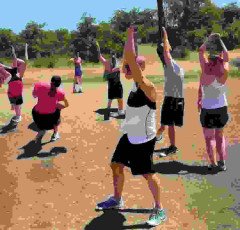





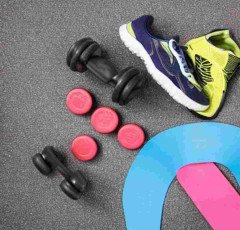





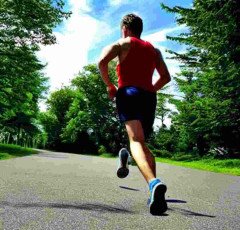


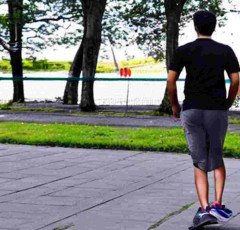


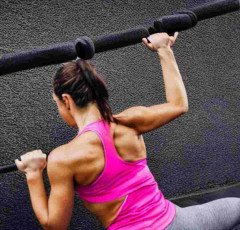

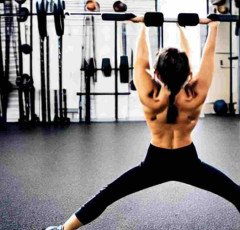






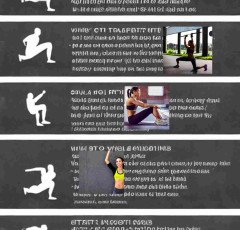




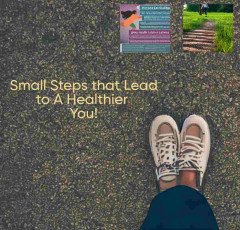













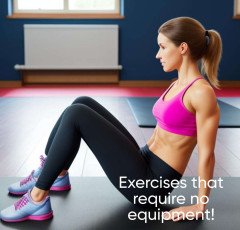

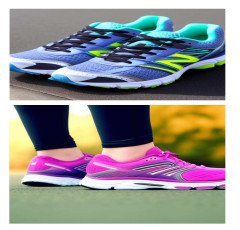






















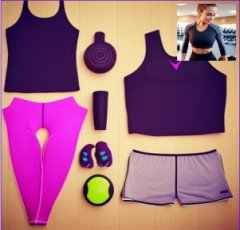














 Only For The United States
Only For The United States  Samsung Mobile
Samsung Mobile  Wireless Gaming Mouse
Wireless Gaming Mouse 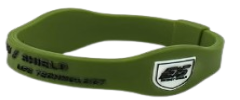 Wristbands
Wristbands  Wall Lamp
Wall Lamp  Best Robotic Vacuum Cleaners
Best Robotic Vacuum Cleaners  Unlimited access to classes on illustration, photography, design, film, music
Unlimited access to classes on illustration, photography, design, film, music  Digital Voice Recorder
Digital Voice Recorder  Adidas Shoes
Adidas Shoes  Pet Care Products
Pet Care Products  Kitchen Daily Use
Kitchen Daily Use  Best Sellers On Amazon
Best Sellers On Amazon  Artificial Intelligence
Artificial Intelligence  Dual USB Car Charger
Dual USB Car Charger  Dell Laptop
Dell Laptop  Duke T Shirts
Duke T Shirts  The Secret Email System
The Secret Email System  Motion Sensor Light
Motion Sensor Light  Sennheiser
Sennheiser  Best Home Appliances
Best Home Appliances  One World Collection
One World Collection  LCD Writing Tablet
LCD Writing Tablet  Best Phone
Best Phone  Air Purifier for Home
Air Purifier for Home  Realme Smart Phone
Realme Smart Phone  Bathroom Mirrors
Bathroom Mirrors  Women Fashion
Women Fashion  ELECTRONIC ACCESSORIES
ELECTRONIC ACCESSORIES  NordLocker
NordLocker  Men Clothing
Men Clothing  SOFAS
SOFAS  Creative Brief For Video Shoot
Creative Brief For Video Shoot  ASPINAL LONDON
ASPINAL LONDON  The Click Engine
The Click Engine  Door Handle Collection
Door Handle Collection  Online Technology Classes
Online Technology Classes  1150+Trendy kids coloring pages Bundle
1150+Trendy kids coloring pages Bundle  ASUS Laptop
ASUS Laptop  Online Marketing
Online Marketing  All Wireless Products
All Wireless Products  Prime Video
Prime Video 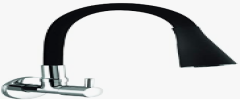 Kitchen Tap
Kitchen Tap  RPM 3.0
RPM 3.0  Top Rated From Amazon
Top Rated From Amazon  NordVPN
NordVPN  Healthy Ingredients
Healthy Ingredients  Apple iPhone
Apple iPhone  Wireless Bluetooth Earphones
Wireless Bluetooth Earphones  Graphics & Design
Graphics & Design  Crocs
Crocs  Home Decor Items
Home Decor Items  Smart Doorbell
Smart Doorbell  Hot Bags For Pain Relief
Hot Bags For Pain Relief  HP Laptop
HP Laptop  BEST SELLER TOP10
BEST SELLER TOP10  Rakhi
Rakhi  Amazon Best Selling Products
Amazon Best Selling Products  Best Selling Books
Best Selling Books  iPhone cable
iPhone cable  Echo Dot - Smart speaker with Alexa
Echo Dot - Smart speaker with Alexa  Smart Watches
Smart Watches  SEO Checklist
SEO Checklist  Hanging Lights For Living Room
Hanging Lights For Living Room  Hello Theme
Hello Theme  Acer Laptop
Acer Laptop  4k Projector For Home
4k Projector For Home  Essentials for Gamers
Essentials for Gamers  Stylish Sneakers by Red Tape
Stylish Sneakers by Red Tape  TitTok Revolution
TitTok Revolution  NordPass
NordPass  Unreal Engine 5 For Beginners Learn The Basics Of Virtual Production
Unreal Engine 5 For Beginners Learn The Basics Of Virtual Production  Favorite Company (Cuelinks)
Favorite Company (Cuelinks)  Puma (Clothing & Accessories)
Puma (Clothing & Accessories) 


















